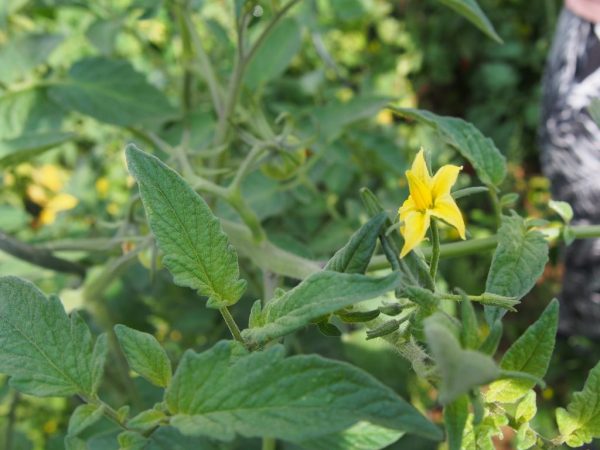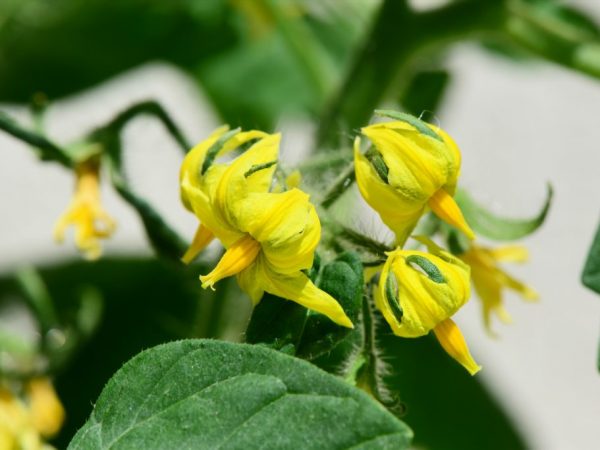Top dressing of tomatoes during flowering and fruit setting
To obtain a good harvest, feeding the tomatoes during flowering and fruit setting plays an important role. The quantity and quality of the fruit depends on how much the plant was provided with nutrients.

Top dressing of tomatoes during flowering and fruit setting
It is impossible to rashly introduce the first fertilizer that comes into the soil: the result will be the opposite of what was expected. It is necessary to accurately calculate the proportions and know what properties this or that soil has. For example, fertile black soils require significantly less fertilizers, while loam and sandy soils require them more.
What are tomatoes fertilized for?
During the growing season, tomatoes are fertilized 4 times. This is enough to fully provide plants with nutrients, as well as components of the mineral group.
The main dressings are those produced at the beginning of flowering bushes, as well as in the process of forming the ovary.
If during this period the tomato receives less nutrients from the soil, many barren flowers are formed, which only waste the plant's strength in vain. The size of the fruit also suffers from this: large-fruited tomatoes in this case grow small.
If the tomatoes are not properly fed during flowering, the fruits will contain many underdeveloped seeds. This problem is relevant for summer residents who grow varietal crops and independently collect seeds for planting. Good healthy seedlings will not work out of such seed or plantings will not sprout at all.
How to fertilize tomatoes during flowering
At this stage of the growing season, tomatoes are most in need of micro- and macroelements.
Also, by this time, the need for plants in nitrogen significantly decreases. An exception is when the bushes are very frail and do not have well-developed stems and leaves. This is due to the poor quality of seedlings, lack of normal care and watering, and a lack of nitrogen in the first weeks after transplanting the plant into open ground.
Accordingly, the answer to the question of how to feed tomatoes during flowering is mineral and organic fertilizers containing the right amount of micro and macro elements. This is true for all plants, both for those growing in the greenhouse and for those living in the open field.
Mineral fertilizers
Feeding tomatoes during the flowering period should be given due attention. Among the huge variety of mineral dressings, you should use those that contain potassium chloride. It provokes an increase in the concentration of chlorine in the soil. This leads to the death of tomatoes.

Top dressing during flowering is very important for tomatoes.
Top dressing of flowering tomato bushes is carried out with the following preparations:
- granular or crushed superphosphate with a phosphorus concentration of not more than 18%;
- double superphosphate, which is a more saturated fertilizer with a phosphorus concentration of 40 to 50%;
- potassium salt, which contains 30-42% pure potassium;
- potassium chloride (potassium concentration - not less than 53%);
- potassium sulfate (potassium concentration - from 45 to 56%).
Over the past 5 years, the Kemira Lux complex has shown itself to be excellent. It is completely soluble in water and contains a complete list of substances necessary for feeding tomatoes during the flowering period.
Senor Tomato also effectively copes with nutritional deficiencies during the formation of the first inflorescences. In addition to minerals, it contains nitrogenous bacteria that usually live on the nodules of legumes. The humic acids in this fertilizer improve the nutritional properties of the soil. Not suitable for foliar processing of tomatoes.
The Effekton complex is produced using a patented technology by uniquely transforming peat into nutritious compost using specialized bacteria. It also contains phosphate rock and shale ash, which provides the plant with not only minerals, but also organic matter. Top dressing of tomatoes during flowering with this preparation guarantees abundant fruiting and a good harvest.
Organic fertilizers
Those who do not accept the introduction of chemical components into the soil are recommended to use organic fertilizers. They are no less effective than mineral ones, but they have their advantages.
There are several types of such dressings:
- Humates not only improve the structure of the soil, but also contribute to the development of beneficial microflora in it. Thanks to these fertilizers, you can get high yields even on the poorest soils. You can use Kuznetsov's GUMI, Universal humate or Lignohumate. They are bred in water according to the instructions and the bushes are watered at the root.
- Yeast is a simple and very effective top dressing. It helps to catch up in growth of plants that have tolerated acclimatization to new soil for a long time before transplanting or that were initially very weak. The action of such a drug lasts up to 4 weeks, depending on the concentration of the solution and the presence of organic matter in the soil. Method of preparation: 100-150 g of fresh yeast is dissolved in 1 liter of warm water. After the start of fermentation, the solution is poured into 10 liters of water and the tomatoes are poured under the very root, but so that the solution does not get on the leaves and shoots.
- Ash is not only a source of calcium, phosphorus and magnesium, but also an effective remedy for many nightshade pests. Treated wood (painted, varnished, glued) is not suitable Fertilization of tomatoes is carried out both with organic matter in dry form and diluted in water.
- Iodine is an excellent remedy for flowering tomatoes. It promotes friendly flowering and quick fruit setting. For 10 liters of water, 6-8 drops are measured with a pipette and mixed with 0.5 liters of ordinary serum. The resulting solution is poured over the beds. For foliar processing, take no more than 30 drops of the substance and dilute them in 1 liter of milk whey, add 1 tbsp. l. hydrogen peroxide. All this is diluted in 10 liters of water and sprayed with tomato leaves.
- Infusion of herbs is one of the most affordable means for fertilizing tomatoes. Any weed that has not yet entered the flowering phase is finely chopped with a shovel or cut with scissors. After it is placed in a barrel, bottle or any other container for 1/3 of the total volume. All this is poured with water and left to ferment in the sun for 10-12 days. A field of 1 liter of infusion is mixed with 9 liters of ordinary water and the bushes are watered (1-1.5 liters for each).
- Boric acid improves the formation of flowers in the greenhouse and accelerates the fruiting process. In 10 liters of water, dilute 2 tbsp. l. boric acid, after which the plants are fed at the root.
Organic fertilizers are applied both as monoforming and in combination. Contrary to the popular belief that natural substances in excess can not harm the fruiting process, you need to fertilize plantings with them in moderation. Excess leads to a slowdown in the growth of bushes, as well as to the fall of the ovary.
Conclusion
It is possible to fertilize tomatoes during flowering and ovary formation with both organic and mineral substances.Regardless of whether they grow in a greenhouse or in the open field, they are fed according to a certain scheme and in a certain amount. Violation of the order of dressing and dosage threatens to deviate from the norm for the development of bushes, and also leads to a decrease in the quality and volume of the crop.


